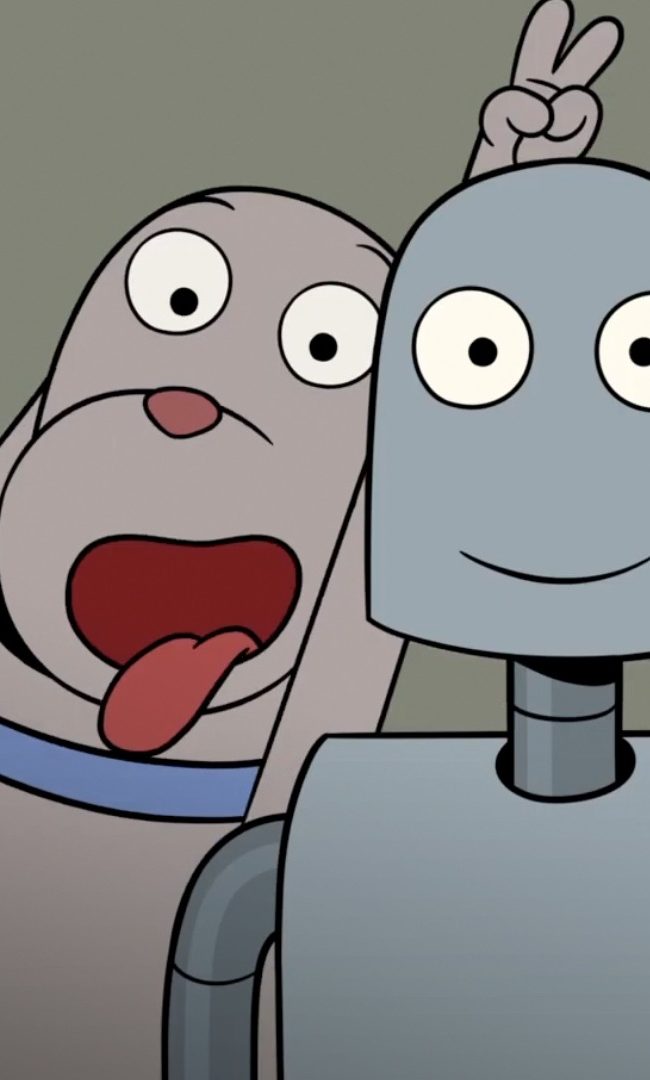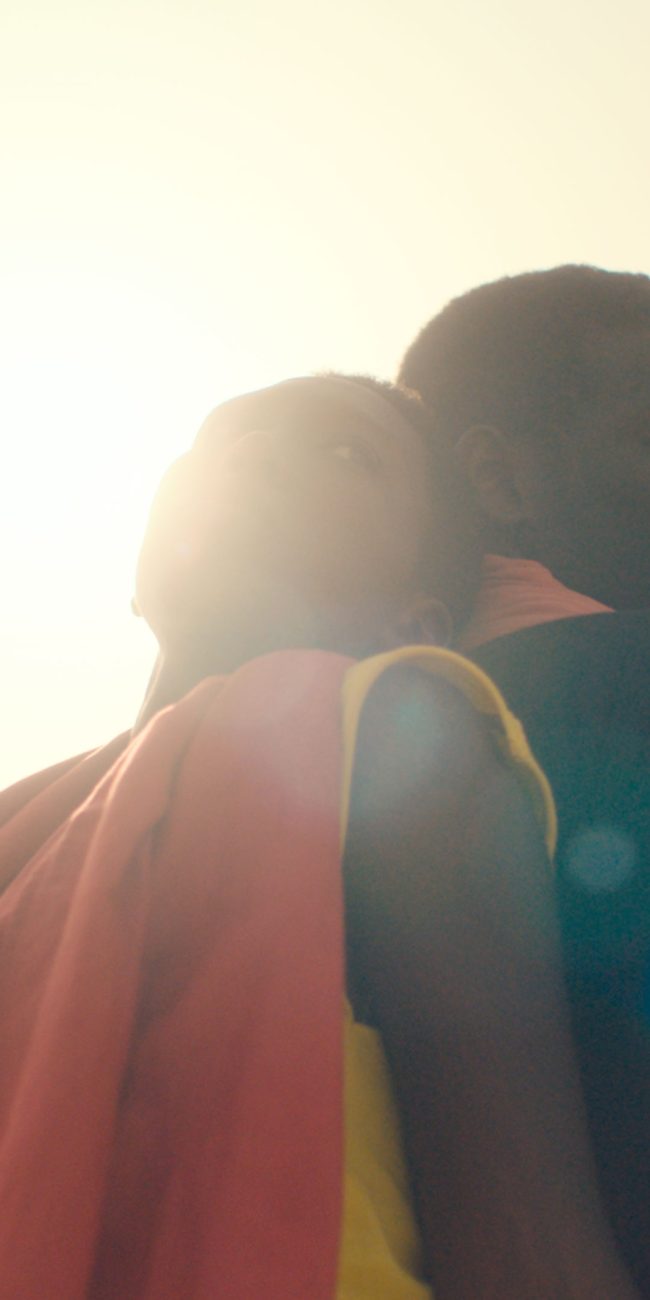A Conversation with Imogen Thomas (EMU RUNNER)
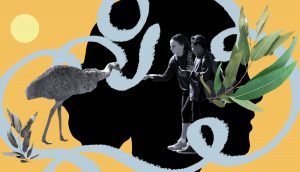 I met with director Imogen Thomas – whom I know from years back, in film school – on Friday, September 7, 2018, at the Toronto International Film Festival, to discuss her narrative feature debut, Emu Runner, which premiered at the fest. The movie, shot mostly with non-actors from the indigenous community of Brewarrina, in Australia, well over 500 miles northwest of Sydney, tells the story of young Gem, who loses her mother at the start of the story and must learn to cope with her grief as best she can. She develops an obsession with a local emu bird, which helps her through the roughest patches. Here is a condensed digest of our conversation, edited for length and clarity.
I met with director Imogen Thomas – whom I know from years back, in film school – on Friday, September 7, 2018, at the Toronto International Film Festival, to discuss her narrative feature debut, Emu Runner, which premiered at the fest. The movie, shot mostly with non-actors from the indigenous community of Brewarrina, in Australia, well over 500 miles northwest of Sydney, tells the story of young Gem, who loses her mother at the start of the story and must learn to cope with her grief as best she can. She develops an obsession with a local emu bird, which helps her through the roughest patches. Here is a condensed digest of our conversation, edited for length and clarity.
HtN: First of all, Imogen, I’m really curious, why an emu? When I think of Australian animals that are cinematically interesting, I think of the koala or the kangaroo. What made you gravitate towards an emu?
Imogen Thomas: When I first went to Brewarrina … if you can imagine this landscape, it doesn’t have an undulation, it’s just….you can almost, if you go out on the Goodooga Road, which is a little sort of satellite town from Brewarrina, there’s not an undulation at all. And you can almost feel like curvature of the earth. You feel so diminutive in this big landscape. But when I first went out there I saw a flock of emus and they’re breathtaking, these birds. And they’re these sorts of birds that haven’t changed over time.
The thing that really interests me about them, in relationship to this story, was also that it’s the father emu that raises the young. There were a lot of parallels with my story. And also, there’s a lot of indigenous law about emus in the area and how they got these traits. It started to feed my interest, these birds. And not only just their physical sort of … they’re very unusual looking. The scale of them. They’re very curious animals. And the idea that they don’t fly, that their great skill is their agility and speed.
HtN: Right. They’re like the ostrich, right?
IT: Yeah.
HtN: How many big, flightless birds are there in this world? There’s the ostrich and the emu. Is that it?
IT: I think so.
HtN: You said there were parallels to your own story.
IT: The story of the film is a lot about a little girl navigating her journey through loss and grief and her own sorrow. And also, it’s about this relationship she forges with this wild emu, which is her mother’s totem animal. But it’s also about…the parallel narrative is the life cycle of this emu that’s happening while this narrative is following through, which is about how she watches this emu find a mate and then eventually, the female will have its chicks. And the life cycle will continue again. But the interesting thing is it’s also about her father, who finds himself in this very challenging predicament.
HtN: Right.
IT: Which culturally, in many ways, it’s the women in the family that take on this role. But the father really wants to step up and keep his family together. He’s quite determined and dogged about that. Then I had this emu, and this parallel narrative happening.
HtN: That makes sense. Now, you’re never supposed to work with children or animals, and you do both here. That’s a big challenge to take on for your first feature. Were there any particular challenges along that way? I mean, you have quite a lot of young actors. You have quite a lot of emus. Did you have trained emus? Did any of the children have any training?
IT: No. So, the casting process was in the community. This film was made with the Brewarrina community and for the Brewarrina community, and that was where I began my casting process. Prior to that, really anyone from the community, they had no experience in front of a camera before. We had an audition process and lots of beautiful children came forward. Then we just slowly, through a process of just working through scenes and things like that, started to see people that have more strength in front of the camera and were more comfortable with the camera around them.
That was particularly the case with Rhae-Kye Waites, who plays Gem. And also, the other important thing, I think with working with children is knowing that they’ve got the family support. So, it’s all very well to find someone that is amazing. But they also need to have family that can help them because it’s very demanding. And they are looking at a five-week shoot, six days a week, and because she is the central protagonist, there is very little time off.
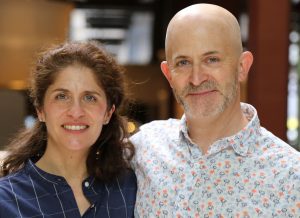
Filmmaker Imogen Thomas and our Chris Reed
HtN: And how much time are you allowed to have them on set, because there are laws…
IT: Yes, of course. And that was something that also had to be brought into play.
HtN: How about with the emus? What were the challenges in filming them?
IT: So, I initially did a lot of research and there’s the option of raising an animal from a chick and training it. But then to transport an animal onto location is very difficult. And also, they’re very unpredictable animals. They’re not a herding animal. In 2013, I made a little teaser. And in that case, I decided to shoot footage in the wild. And from that exercise, I realized the incredible challenges of that and that it didn’t matter even how long a lens I had, it was going to be very difficult to get the scenes I wanted to realize.
So, then I decided that I would have to shoot at an emu farm. And there are only 4 emu farms in Australia. There are a lot of laws about protecting them. But I was very fortunate that the emu farm where I worked had a lot of experience making documentaries and other films. So, they were marvelous. The only challenge we had was that where we had to shoot was 4 hours away from the primary location. So, we ended up spending a week in a place called Tooraweenah, at a place…at an emu farm called Emu Logic. This is massive, hundreds of emus. You’re not just looking at one emu. I was working with probably 100 emus to get the footage. We could only shoot west, because if we shot in the opposite direction, we had the Warrumbungles, which have these gorgeous mountains.
HtN: And that didn’t fit the rest of your location?
IT: It didn’t fit my location. And the other thing is we had hundreds of emus all standing around watching us, vying to be in front of the camera. We had people herding these emus out of shot. It was totally crazy. And also, I shot in wintertime, so it’s at a different time of their breeding cycle. So, they’re much quieter.
HtN: Right. My sister once had an encounter with an emu who insisted on constantly rubbing itself up against her. Are they sociable in that way?
IT: They are. I mean, they would steal my hair. They’re very,,,they intrude all the time. And as I said, it was just the thing trying to keep them out of the lens, out of the frame.
HtN: (laughs) Have you seen the documentary Kedi, set in Istanbul? About cats in Istanbul?
IT: No, I have not.
HtN: In the behind-the-scenes footage, the cats are always coming up to the camera, rubbing themselves on the camera. (laughs) It’s a really great documentary.
IT: So, I ended up being an animal wrangler.
HtN: You were your own animal wrangler.
IT: Yes, I was. We had … the people who worked at the actual farm also assisted with that.
HtN: So, why that opening disclaimer on the screen? Can you talk about the necessity of doing that, for Aboriginal culture?
IT: That’s…
HtN: Where you talk about the names of the deceased.
IT: Sorry business and mourning are very important for indigenous people and it’s just part of the protocols so that people can prepare themselves that the material is sensitive and that it might bring up issues that are unsettling and upsetting. So, there are lots of rituals with sorry business and grief and mourning.
HtN: What is that first word you keep on saying?
IT: Sorry business, which is when people die.
HtN: Got it.
IT: And it’s a period of mourning and in these communities, it’s quite a big part of their lives. It really is. When I was liaising with elders in the community, in particular the man who plays the pastor in the funeral scene, I was talking to him about it and just also the protocols of shooting the scene at the cemetery and the sensitivities of that. When I was doing the preparations, he threw the question back at me and he goes, “How many people do you think I’ve buried in this community? This is a community that’s probably about 800 people.” And I said, “I can’t guess.” And he said, “Last year, I buried 36 people in this community.” So grief, you know, loss is a big thing in this community. And it’s very paralyzing. It not only, obviously, affects the immediate family, it affects the whole community. It’s quite shattering and yeah, all I can say is it paralyzes people in questioning their own existence and their place in the world very much. So it felt a very pressing issue that we needed to kind of tackle with this story.
HtN: I noticed you have a lot of shots done at magic hour, shooting later in the day. Did you have any sort of issues just shooting in that location, technically or otherwise?
IT: Well, when you think of the logistics…I live in Sydney, and to get to Brewarrina, it’s 815 km from my house. So that is about 600 miles. So logistically, I mean it’s a very geographically isolated place. I had a very modest crew. We’re talking about 15 people. And some people could only work for a week because they were moving, and everyone was working pro-bono. It was a no-budget film. In that regard, it meant that we had to be enormously resourceful. We only had one camera and one camera assistant, who was also the data wrangler. So in many ways, it was like shooting a documentary.
HtN: Well, I’m asking because it was well shot.
IT: You know, we were very mindful of making time. And we we just had to be very methodical with the scheduling.
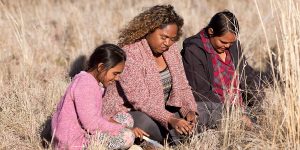
A shot from “Emu Runner”
HtN: Sure. What camera did you shoot on?
IT: We shot it on Canon C300, with prime lenses.
HtN: OK. So, you’ve worked with the Brewarrina community before, I think I read.
IT: Yes, that’s right.
HtN: What kinds of projects had you been doing in this community before that led up to this?
IT: So, in 2003, that was my first engagement with the community. I went out to the community with a not-for-profit organization to go and work at a women’s shelter called Aganya, which means “home” in the Ngemba language.
HtN: Is the Ngemba language the official name of the indigenous language of Australia?
IT: Oh, no, no, no, no. There’s lots of different tribes. And this particular one is also not exclusive to this particular nation.
HtN: OK.
IT: Maybe I should just frame that Brewarrina has a sort of a river that snakes through it called the Barwon River. And it’s a very spiritual place. And it was a place of ceremony, birthing sites, male initiation site…and lots of different tribes had come to this and it has the oldest fish traps in the world, and it’s a World Heritage Site. So, an amazing place in that regard. Sorry, I got off course.
HtN: I got you off course by asking the question about the language. So, you had come working for a non-profit to do some projects in this area…
IT: So, I came with an arts initiative but then when I sort of got on the ground, I started to realize that the ideas that were cultivated in the city didn’t match the world that I was experiencing. And if anything, what I needed to do was just to step back and be pragmatic and do simple things like, “OK, what do you need me to do? I’ll put on a load of washing. Let me help you.” And just having conversations. And like these women that were there, they had children. I had a daughter, a toddler. So, we had this common ground of going through motherhood together and just building relationships. What were their dreams? What were their struggles through this labyrinth of motherhood? So that broke down the barriers, to start with.
Also, my partner works in early childhood and is a great advocate for children and a child psychologist. And he was working with the early childhood educators in the areas. So, I started to meet one woman in particular in this community, Frayne Barker. And I just felt that there’s so much to say about this world. And while I felt that not being indigenous meant that it’s maybe not my right to tell it, I felt maybe there was the possibility of creating a film here at some point. And Frayne sort of turned to me and said, “What could we make a film about?” So, I said, “How about I just come up with a few little ideas?” And so we started with the idea of making a short film, which we made in 2008, called Mixed Bag. I created a whole series of little sketches of ideas. The process came through a whole series of some anecdotal things, like little threads of narratives, you know, or cups of tea you’ve had with people.
And in that particular thread, it was very much about prejudice and about racism. So, I decided to develop some little stories. And she said, “I like that one. Let’s develop that one.” So, I developed it into a script, and again, the writing process involved taking it to her. She would read it and give me some notes. I’d go back and then revise it, and then re-massage it, and keep working this process until we felt we’d gotten to a stage where it was ready to be made. That’s what we did with Mixed Bag, which is a very classical story of the fish out of water, a white woman whose car hits a kangaroo, and she has to pull into the nearest town. And through the course of that day, her engagement with the community transforms her and she sees the world a bit differently. And it was really fun, the success of that little film, which not only engaged indigenous people but also non-indigenous people in the community.
It was great energy. Everyone felt so positive about it. And it brought people together that normally didn’t have conversations. They had a common platform: it was the film. So, when you’re at the supermarket, you say, “Oh, did you get to the screening of the film? Wasn’t it great?” Or “Do you know what’s happened to the film? It’s in Poland.” So, you know, it brought people together. And I thought that, in a sense, there was some social progress with that as well as with the film. And for me, that is also quite important, that the film kind of has some sort of social responsibility, too.
HtN: And from there, you got to the feature film. Congratulations!
IT: Thank you!
– Christopher Llewellyn Reed (@ChrisReedFilm)








